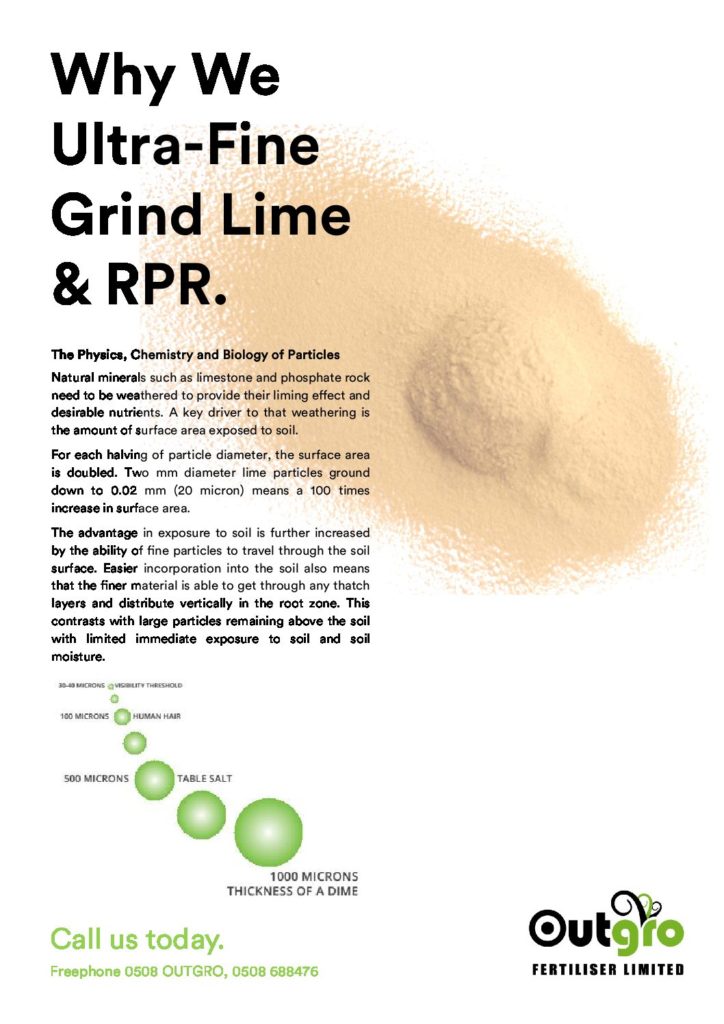Why ultra-fine grind?
Lime
The use of finely ground lime (limeflour) is popular in New
Zealand and around the world but the physics and
chemistry is often misunderstood. The expectation in soil
science is that limeflour has a similar level of pH lifting
ability in the long term as the same weight of coarser
AgLime. The clearest difference though is in the speed of
reaction and the significance of that is not just a matter of
patience or even speed of return on investment. It comes
down to an impact on the soil solution calcium and pH
levels in the short term rather than the whole soil pH effect
in the long term.
A small amount of limefour provides temporary changes in
the soil solution that can lead to long term benefits in the
pasture. One aim is to boost clover establishment, clover
nodulation and clover nitrogen fixation. A further aim is to
provide a boost to biological activity that stimulates the
decomposition of organic matter in the soil, improving
nutrient cycling. This can all lead to a pasture response and
the setting up of conditions for improved pasture condition
and productivity in the medium and long term.
Phosphate Rock
Reactive phosphate rock (RPR) is deemed reactive enough
to be used as fertiliser but the speed of release can be over
a period of three or so years depending on conditions.
Being insoluble in water, RPR avoids the issue of flushes of
excess available phosphate such as surface runoff losses,
excessive immediate plant uptake (which could increase
dung transfer losses) and an impact on beneficial
mycorrhizal fungi (which increase root efficiency for uptake
of phosphate, other nutrients and water). Finer grinding of
RPR is one of the surest ways of speeding up the release of
phosphorus in the soil from this natural mineral while still
retaining RPR’s environmental and soil biology benefits.
Plant uptake of phosphate relies on close contact between
the phosphate source and either the plant roots or
mycorrhizal fungi associated with the roots. Finer particles
allow a more even distribution of the phosphate source in
the root zone aiding access to phosphate.
Other Additions
A fluidised blend can provide an opportunity to apply
legume seed to take advantage of the fine lime and trace
elements can also be applied with the benefit of some foliar
uptake. Foliar uptake of most trace elements (and
particularly iodine, copper and cobalt which can be
inefficiently taken up by roots) is more efficient that
application to the soil.
– Dr Tim Jenkins (printed with permission).



